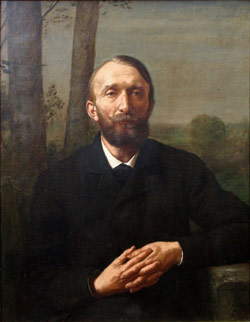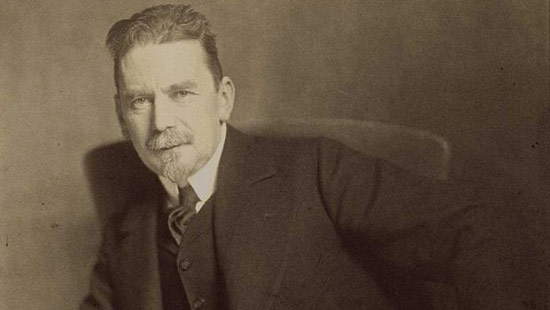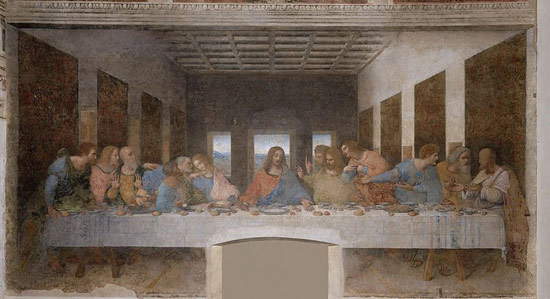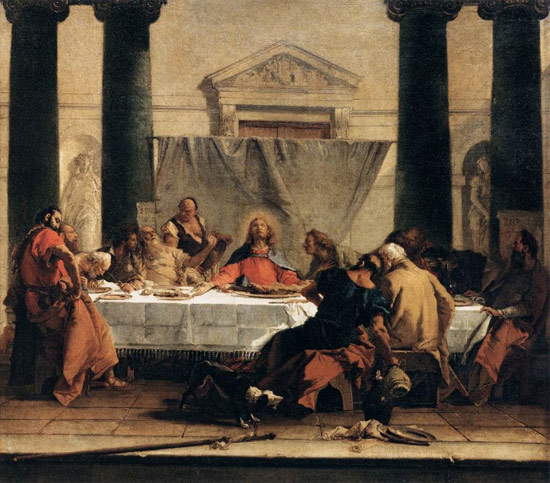Art criticism: pure visibility and the origins of formalism (Konrad Fiedler, Heinrich Wölfflin)
Anyone who has (or has had) anything to do with the history of art criticism must at some point or another have come across the figure of Konrad Fiedler (Öderan, 1841 - Munich, 1895), one of the greatest philosophers of art who lived in the 19th century: he is credited with having developed a fundamental art theory, destined to influence most critics and connoisseurs even decades later. This is the theory of pure visibility: the concept is not the simplest, and we will try to discuss it in the clearest possible tones. We can start from afar: those who have studied Plato will undoubtedly remember that, for the Greek philosopher, art was mimesis, that is, imitation of nature, of reality. Here: the theory of pure visibility goes in the totally opposite direction. For Fiedler (who systematically organized his thought in a number of treatises, among which the most notable is SUlla valutazione delle opere d’arte figurativa (On the Evaluation of Works of Figurative Art), dated 1876), art cannot be configured as an imitation of reality due to the fact that each of us perceives reality differently from others. We must start from a fundamental assumption: there is a reality that is independent of works of art, and consequently an artist, when he creates a work of art, will create a new world, which will be solely the result of his perceptions and gesture. In the essay On Evaluation, Fiedler makes it clear: “What art creates is not a second world alongside another that would exist without it anyway, but through artistic consciousness it produces the world for the first time.” So, for Fiedler, the work of art “is not an expression of something that would exist even without it,” that is, an expression of reality, but rather it is “artistic consciousness itself that in some cases reaches the highest development granted to the individual.”
 |
| Hans Thoma, Portrait of Konrad Fiedler (1884; oil on canvas, 100 x 75 cm; Berlin, Nationalgalerie) |
Each artist develops his or her own artistic consciousness, which is expressed in the artist’s own activity. An activity of free creation (and not imitation, then) that the artist can conduct with the means he has at his disposal to perceive reality: reine Sichtbarkeit, or pure visibility. The latter is to be understood (trivializing) as the artist’s cognitive activity, which starts from the perceived datum, inwardly reworks it and organizes it in the form of formal structures, and enables him to arrive at artistic expression. What distinguishes the artist from the ordinary man, from the non-artist, is precisely the ability to transform cognitive activity into expression. And art begins where data that come from reality and are reworked by the mind are transformed into gesture, take form, become work and creation. We derive from this two fundamental considerations, also for later criticism. The first consists in the fact thatartistic activity is for Fiedler more important than the work itself since it is the activity itself that is the content of the work: “In the work of art the formative activity finds its external conclusion, the content of the work of art is nothing other than the forming itself.” The second: artistic activity, which, let us remember, is both cognitive and formative activity, cannot exceed the limits of the individual. The artist, in other words, can never fully express his inner activity, the result of complicated processes, in the work of art: if the artist therefore has an image in his mind, it is not certain that that image is then fully realized in the work. We therefore have one more element to understand how important, for Fiedler, the artist’s activity is, rather than the result.
One of the main merits of Fiedler and of those who elaborated his theories (think especially of two artists: the painter Hans von Marées and the sculptor Adolf von Hildebrand) consists in having shifted, with regard to the work of art, the focus from the content toward the form. This is where the method known as formalism originated, through which a vast array of art historians began to approach works and artists by investigating primarily, precisely, the form, and assigning the content a role of lesser importance. At the origins of formalism in art criticism we can place, in addition to the figure of Alois Riegl (of whom we had already spoken: he, too, embraced Fiedler’s theories), that of one of the most important art historians ever, the Swiss Heinrich Wölfflin (Winterthur, 1864 - Zurich, 1945), who took his cue precisely from the Fiedlerian conception of art (but who also drew suggestions from the works of Hildebrand, with whom he also kept up a correspondence). Wölfflin’s thought found an organic arrangement in a seminal work of his maturity, Kunstgeschichtliche Grundbegriffe, “Fundamental Concepts of Art History,” from 1915. This is perhaps the Swiss scholar’s most important work for the purpose of understanding his method.
 |
| Heinrich Wölfflin |
In summary, Wölfflin intended to provide a method for analyzing the visual forms of artistic activity: in essence, what Wölfflin is interested in is not so much the object itself, but the way the artist sees it. And it should be emphasized that, for Wölfflin, the way an artist observes reality is always tied to a specific historical period, which sets insurmountable canons: works produced in a certain epoch will therefore be subject to the problems of that epoch, and of that epoch will use forms and languages. For Wölfflin, in short, form is even more important than the personality of the artist, who cannot cross the limits (of taste, of language) imposed by his or her own time, while still being able to bring something new. Therefore, there has been talk of an “art history without names” precisely because the personality of the artist becomes secondary to the patterns set by the era within which the artist moves. The modes to which the artist is bound are dictated, according to Wölfflin, by five pairs of fundamental concepts, on which the critic’s analysis of the work of art must also be based, since they determine its form. The five pairs, for the Swiss scholar, are these: linear-pictorial, surface-depth, closed-open form, multiplicity-unity, absolute clarity-relative clarity.
It is worth dwelling briefly on these five polarities in order to analyze them a little further. The first pair, linear-pictorial, is strictly concerned with the representation of objects: the linear style, based on drawing, aims to provide as objective and analytical a representation of an element of reality as possible (and thus tends to finitely delimit objects, providing almost the perception that they can be touched by hand), while the pictorial style, which gives greater importance to light and colors, tends to an indefinite representation, as it is interested in theappearance of objects and their relationship to their surroundings more than in their nature. Already from this first antithesis we can understand why the formalists put content in the background: precisely because the same reality could be represented differently by an artist with a style characterized by linear forms, and by an artist with a painterly style. Moving on, the opposition between surface and depth concerns, as we can easily guess, the organization of the elements in space: on the one hand we have an art that tends to arrange objects on ordered planes, while on the other hand there is an art that prefers free dislocation. Thus we come to the closed-form-open-form polarity: it concerns the order that objects take within the composition. If the elements of a work follow a rigid form (e.g., a geometric polygon), we have closed form, and, conversely, in a work of art whose elements cross the physical boundaries of the work itself, or are arranged in an irregular and non-strict order, we have open form. In the dichotomy between multiplicity and unity, we have a style in which the various elements of the work of art, while forming part of a single composition, retain their independence (multiplicity), as opposed to a style in which each element contributes to form a unified whole, in which objects cannot be divided from one another (unity). Finally, a style based on absolute clarity tends to provide the viewer with fixed, finished and accomplished scenes, while the style devoted to relative clarity prefers incompleteness, impermanence and transience.
To better understand how the five categories apply to paintings, it is necessary to refer to two paintings, which are cited by Wölfflin himself in his “Fundamental Concepts of Art History,” as works in total opposition to each other: Leonardo da Vinci ’sLast Supper in Santa Maria delle Grazie in Milan, and Giambattista Tiepolo ’s painting on the same subject currently in the Louvre. For the Swiss art historian, Leonardo represented the highest example of the classical style developed in the Renaissance: we find, therefore, in Leonardo’s famous wall painting, the principles of linearity, surface representation, closed form, multiplicity and absolute clarity. Tiepolo’sLast Supper, on the other hand, stands on the other front. We can use Wölfflin’s own words, "Although it cannot be compared with Leonardo’s work, Tiepolo’s LastSupper represents its absolute opposite [...]. Christ cannot be separated from the group of disciples, placed at an oblique angle in front of him, with whom he relates and who, through their mass and the coincidence of long shadows and strong light, achieve visually the greatest prominence. Whether we like it or not, everything causes our eye to be guided to this point, and in addition to the tension in depth between the group in the foreground and the central figure behind, the surface elements fade into the background. This is something totally different from what happened with the figure, isolated, of Judas in the primitive artists, where he appeared as a pathetic appendage, unable to guide the eye forward." Tiepolo, who is mentioned in the chapter devoted to the contrast between surface and depth, is a clear painter of depth andunity (which Wölfflin hints at in the passage in which he makes us aware that Christ cannot be separated from the rest of the scene), a representative of painterly style, open form and relative clarity. Given these assumptions, it is easy to see how Wölfflin’s method is essentially comparative: since he has to proceed by analyses based on opposing categories, and since the individuality of the artist is secondary for the Swiss art historian, it follows that, according to his way of seeing things, the study of the individual work of art makes little sense. Not least because there would be no artists capable of fully embodying the specifics of a single category: there will therefore be no purely linear artists, but rather artists who are more linear than others. And from such differences, the personality of the individual artist should therefore also stand out.
 |
| Leonardo da Vinci, Last Supper (1494-1498; wall painting, 460 x 880 cm; Milan, Santa Maria delle Grazie) |
 |
| Giambattista Tiepolo, Last Supper (c. 1745-1747; oil on canvas, 81 x 90 cm; Paris, Louvre) |
Wölfflin’s formalism would later be criticized by other art historians, who made several accusations against the Swiss scholar: from the underestimation of content over form (we can say that, for Wölfflin, it is form that explains the work, while for the scholars who criticized his approach, beginning with Erwin Panofsky, the exact opposite is true, that is, it would be the content that determines the form), passing through the lack of importance Wölfflin attached to the personality of the individual artist and the historical context, to the excessive rigidity of his scheme.
However, certain it is that Wölfflin’s contribution was fundamental in several respects. One need only think of how useful he was in better understanding the transition fromRenaissance toBaroque art: it was precisely to the opposition between Renaissance and Baroque art that Wölfflin devoted much of his studies. One of his major writings on the subject, Renaissance und Barock, “Renaissance and Baroque,” was published in 1888, when Heinrich Wölfflin was just twenty-four years old. But not only that, Wölfflin’s studies on the Baroque are also of great importance because it is believed that thanks to them Baroque art has been reevaluated and the dignity of the Baroque has been recognized as equal to that of Renaissance art. Wölfflin, for that matter, had been very clear. In the introduction to his “Fundamental Concepts,” he wrote thus, “When the Baroque departs from the ideals of Raphael and Dürer, it is not a qualitative difference. It is simply a matter of a different way of seeing the world.”
Reference Bibliography
- Raffaele Simongini, Aesthetics of the Image. Styles as forms of vision and representation, libreriauniversitaria.it, 2010
- Maria Rosaria De Rosa, Aesthetics and art criticism in Konrad Fiedler, Aesthetica, 2006
- Jurgis Baltruaitis, Maddalena Mazzocut, The paths of forms: texts and theories, Bruno Mondadori, 1997
- Norman Bryson, Michael Ann Holly, Keith Moxey (eds.), Visual Culture: Images and Interpretations, Wesleyan University Press, 1994
- Francesco Starace (ed.), Panofsky, von Simson, Woelfflin: studies in architectural theory and criticism, Fratelli Fiorentino, 1982
- Roberto Salvini, The Art Criticism of Pure Visibility and Formalism, Garzanti, 1977
- Heinrich Wölfflin, Kunstgeschichtliche Grundbegriffe, Bruckmann, 1915
Warning: the translation into English of the original Italian article was created using automatic tools. We undertake to review all articles, but we do not guarantee the total absence of inaccuracies in the translation due to the program. You can find the original by clicking on the ITA button. If you find any mistake,please contact us.



























